by Laurel Aiello
Annuals paint our landscapes with vibrant colors and textures that are only available in the warm months, breathing new life into flower beds, rock gardens and outdoor planters. There are so many plants to choose from when designing an annual garden, and since we don’t have to worry about overwintering them, the possibilities are nearly endless.
PLANNING OUT YOUR SPACE

Before visiting us and grabbing all the annuals that catch your eye, take a moment to assess your space. Is there a designated spot in your garden for bedding plants? Are you planting annuals in the ground, or are you creating an annual container garden on your patio? Knowing how much space you have, and filling it according to the spacing listed on plant tags, will give you a clear vision of what can fit.
Also consider the orientation of your annual garden, as this will help determine the height and growth habit of the plants you pick. If you’re filling a flat area near a sidewalk, for example, you’ll want to choose shorter plants than if you were creating a tiered display of blooms against the side of a house or beneath a neighborhood entrance sign. If you want annuals to spill over a berm or stone wall, you’ll need to reserve the border of that space for cascading plants.
Another thing to think about when planning your space is sunlight. Many annuals thrive in full sun (six or more hours of direct light), while others are perfectly happy with part sun or even indirect light. Make note of how much light your area gets so you don’t end up frying shade lovers in the sun or depriving sunny annuals of the bright afternoon rays.
PICKING OUT ANNUAL PLANTS
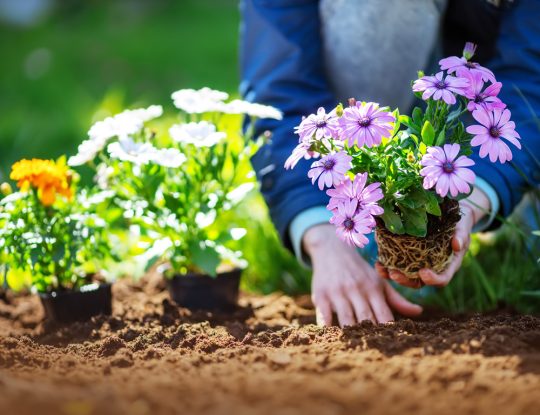
Now comes the fun part: picking out your plants. First look at the pot tags to see how much space and light they need, as well as their height and growth habit (upright, mounding or trailing). Annuals that take up lots of space, such as dahlias and African daisies, should be given plenty of room to fill out, whereas smaller plants, like impatiens, marigolds and portulaca, can be clumped together or used to fill in the gaps.
Pick out taller annuals for the back of your garden (or in the middle if you’re designing potted annual arrangements), and choose a variety of flowers within a color palette. Vary the bloom sizes for added interest—for example, small flowers, like alyssum and bacopa, can accentuate larger blooms in sunny spots, such as zinnias, cosmos and dahlias. In shady spots, lobelia and euphorbia complement begonias and impatiens well.
Don’t just use flowering annuals; mix in leafy plants such as coleus, elephant ears and caladium for a nice balance of color and greenery. Layer plants of different heights, colors and textures to create interest in the landscape, and don’t be afraid to play with unique combinations you’ve never seen done before. If your annual landscape starts to feel chaotic, reduce the number of different plants you have and create groupings of similar types.
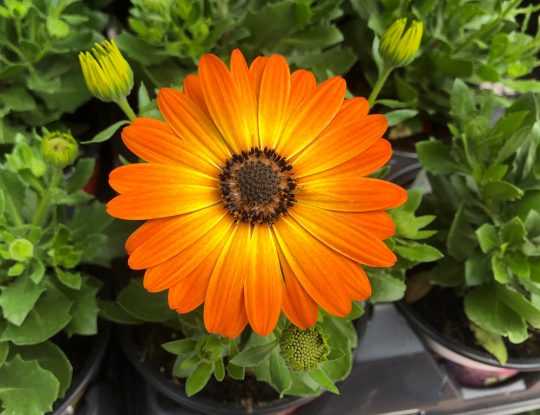

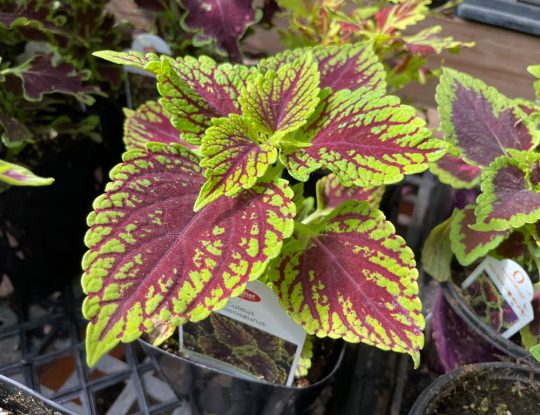
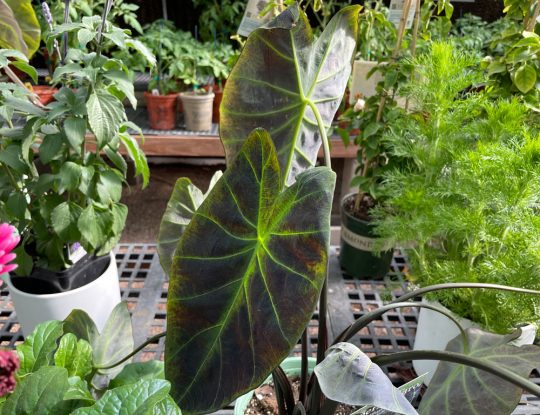
CARING FOR AN ANNUAL GARDEN
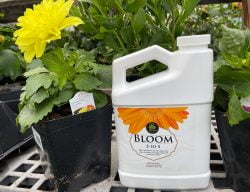
Annuals are heavy feeders, meaning they need fertilizer regularly throughout the growing season in order to put on a constant show of beautiful blooms. Fertilize your annuals with a formula that contains high amounts of phosphorus (our favorite is Age Old Bloom), and keep the soil evenly moist but not soggy.
Deadheading spent blooms is another way to keep flowering annuals happy—though not all of them need it. Large flowers should be removed once they’ve dried up (think dahlias, marigolds and zinnias), as well as some annuals with smaller blooms, like snapdragons. However, there are many “self-cleaning” annuals that shed their old blooms in the wind or hide them with new flowers. These include varieties of cuphea, angelonia, impatiens, bacopa and nemesia, to name a few.
Aside from fertilizing, watering and deadheading, annuals don’t need much to thrive in the summertime. Some of them last well into the fall, and semi-hardy annuals, like pansies and ornamental kale, can even withstand a few light frosts. Though they won’t make it through the winter, they’ll leave you with a blank canvas to create a new work of art next year.
Originally published on May 31st, 2023.
